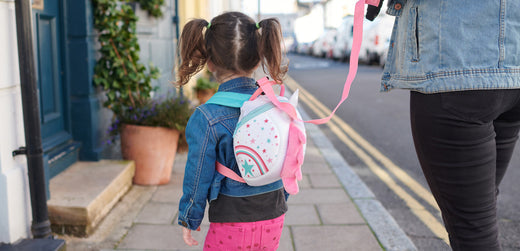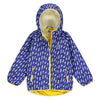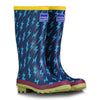
LittleLife's Road Safety Tips
When it comes to the safety of our little ones, there's no such thing as starting too early. Our friends at LittleLife, experts in kids' outdoor and safety accessories, know that outdoor adventures are vital for wellbeing.
In this blog, they share their tops tips for how to introduce children to road safety and lay the foundations for a lifetime of safe explorations and adventures in the great outdoors.
Road awareness and safety is a vital skill and is an excellent opportunity to guide children into developing risk assessment skills. Below we share tips for teaching your child road safety in a positive, friendly, and engaging way.

Tip 1: Start Early and Lay the Foundation
It's important to start teaching your child road safety from a young age. As your child starts to venture outside, emphasize the importance of staying on the pavement and your child walking on the side of you furthest away from traffic. When holding hands, if your child tends to pull away or is particularly independent, consider holding their wrist, as this puts you in control and it is harder for a little hand to slip away from safety. Also, consider using reins or a wrist strap for added safety and security for inquisitive little ones who crave independence. LittleLife’s range of reins in a choice of colourful designs and styles, provide you with control while allowing your child to feel independent and safe. Choose from the LittleLife Toddler Backpack with Reins and LittleLife Reins for Toddlers.
Tip 2: Speak Their Language and Make it Fun
When explaining road safety to your child, use simple and relatable language that they can understand. Introduce terms like "kerb," and “pavement” explaining how it marks the boundary between the safe footpath and the road. Transform the learning process into an interactive game by letting them press the button at the zebra or pedestrian crossing and eagerly wait for the green man. These hands-on experiences will create lasting memories while teaching them important safety principles and safer places to cross.
Tip 3: Four Steps to Safety: "Stop, Look, Listen, and Think"
Introduce little ones to the ‘Stop, Look, Listen, Think’ sequence below and encourage your child to grow up with a strong sense of road safety awareness. Make sure to model the behaviour so your child can copy you and use age-appropriate language. Through practical examples, you can help toddlers develop crucial road safety skills, making this sequence a habit that comes naturally. Here is the Stop, Look, Listen, Think Sequence:
STOP before you come to the edge of the pavement: When walking with your toddler, encourage them to stop just before reaching the edge of the pavement. Explain that it is essential to pause and not step directly onto the road without taking the necessary precautions.
LOOK for cars, bikes, lorries, and other vehicles by looking right, left, and right again: Guide your toddler to visually scan the road right, left, and right again. Point out the importance of looking to the right first – the lane with oncoming vehicles travelling first. Then encourage them to look to the left to check for other traffic, and to look left once more, ensuring that no vehicles are approaching before they proceed.
LISTEN for vehicles too. You may be able to hear them before you see them: Explain to your toddler that listening carefully for vehicle sounds is another crucial aspect of road safety. Encourage them to focus their attention on the street and remind them that they might hear vehicles before they can see them. Emphasize the importance of staying alert and paying attention to their surroundings with all their special senses.
THINK - is there enough time for you to cross the road safely: Teach your toddler the concept of time assessment when crossing the road. Encourage them to consider whether there is enough time to cross safely, taking into account the speed of approaching vehicles. Explain that it's better to wait patiently for a clear opportunity to cross rather than trying to rush across when it may not be safe to do so.

Recap on Safety Habits
-
Explain the difference between a footpath and the road, helping them understand where it is safe to walk.
-
Position yourself between the roadside and your child
-
Instil the habit of holding hands with a known grown-up when walking near the road or feeling like an adventurer wearing a Backpack with Rein when out and about
-
Introduce the concept of the "Stop, Look, Listen, and Think"
-
Find safer crossing places, such as zebra crossings or pedestrian crossings, and explain how they work.
-
"Be bright and be seen", remind children why being visible to drivers is crucial for their safety.

While some of these tips may seem obvious, it never hurts to recap on road safety, especially before teaching it to others. Remember, road safety is an ongoing learning process, so continue to reinforce these messages regularly and turn road safety practice into an engaging and interactive activity with your child. Together, let's ensure our toddlers grow up with a strong sense of road safety awareness. Stay safe and enjoy the adventures that lie ahead!








